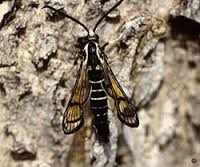Ash Trees and Colorado
Ash trees throughout the United States are under assault from ash borers, but Colorado’s dry climate makes this state’s ash trees particularly susceptible to infestation.
One of the most common ash borers in Colorado is the lilac/ash borer. Like most insects that rely on trees to complete their life cycles, the lilac/ash borer moves in on weakened trees. The wood of 
Ash Borer Prevention
In a dry state, proper watering can be a challenge for property owners. Many people over water out of good intentions, thinking they’re doing their trees a favor. However, too much water can negatively affect a tree’s ability to pull nutrients from the soil. At the other end of the water spectrum, too little water or water that doesn’t make its way deep enough into the soil hampers a tree’s nutrient delivery system.
Colorado’s dry soil can also be a challenge to keep cultivated so manual fertilization may be necessary to ensure good tree health. It’s also possible that a tree location just isn’t conducive to good health. A location with poor drainage, too much or too little sun or that doesn’t offer enough space for the tree to grow naturally will ultimately take its toll on an ash.
For trees that already show signs of lilac/ash borer infestation – pupal skins sticking out of bark in spring, irregular holes in the bark and/or boring sawdust around the base of a tree – insecticide application may be required to save the tree. Timing is always important for insecticide application because different chemicals are typically required for the various life stages of an insect.
SprayTech, Colorado commercial and residential tree-spraying specialists, can help boost your trees’ health and control existing infestations. Contact them at 720-248-0000, for inspection of ash trees on your property and to discuss ash borer treatment options.

